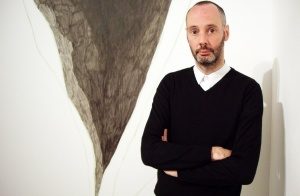Role: Curator
Company: The MAC
Track Record: The role puts him in charge of sourcing art work for the centre’s three galleries as well as contributing to many other facets of life at the MAC.
What does your job entail?
I am the Curator at the MAC and I am responsible for programming the exhibitions you see in the building. This involves researching artists and being aware of what is current and appealing in the world of contemporary art.
In the course of my work I make studio visits both here in Northern Ireland and abroad. These visits with artists and to other galleries enable me to work up themes and ideas with the other programming staff at the MAC both in the visual arts and across other art-forms which are presented here.
Is it 9-5?
The job is not 9-5 at all, there is a degree of desk work but a lot of my time is spent meeting artists and visiting galleries which doesn’t really work into a 9-5 schedule. In the lead up to exhibitions for example I could be working seven days a week and late into the night but it is always worth it in the end.
How did you get into this line of work?
I studied Fine Art at the University of Ulster and went on to study Arts Administration at University College Dublin. I knew whilst I was at art college that I didn’t want to work as an artist and was more interested in putting on exhibitions.
Outline your career to date?
I have been working as a curator for over 20 years having worked at the Orchard Gallery, a spell in London as public arts officer with the London Borough of Greenwich then back to Derry to establish Context Gallery, followed by nearly 10 years at Ormeau Baths Gallery. After this I set up the Third Space – a commercial gallery representing Irish and UK artists whilst also working as curator at the University of Ulster. I’m now settled into my role at the MAC and loving it.
Tell us about your qualifications/training.
I have a BA (Hons) in Fine Art from University of Ulster and Post Graduate Diploma in Arts Administration from University College Dublin.
What qualities are required for your job – personal and professional?
I think most importantly you need to have a wide ranging knowledge of contemporary art and a genuine respect and appreciation for the work of the artist. I think if this is evident you are better able to present and represent the artist’s work that in a way which engages with audiences.
What are the biggest challenges and rewards of your work?
I guess the biggest challenges are trying to keep on top of everything that needs to be done administratively, for example fundraising, copy deadlines, arranging loans of works from institutions or the collection and delivery of work to the galleries.
The rewards come in the form of in seeing an artist’s ideas realised in the gallery and the response of the public to the work. It is such a big deal for the artist to make their work public and when it is well received critically and by the public this is incredibly gratifying.
What do you like to do in your spare time?
I am fortunate to be doing a job which I really love so sometimes work and spare time crossover. I do, however, really enjoy visiting other galleries and learning about new artists. I also enjoy travelling and eating out (too much).
Tell us an interesting fact about yourself.
Every year for five years after hosting an exhibition of Yoko Ono’s work I got a Christmas card and gift from her – or at least her office. I have since fallen off her Christmas list.
Who has inspired you most in your life?
All my art teachers with the exception of one; you know who you are!


